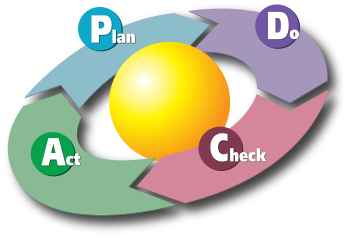 The lean startup movement owes much to its older sibling – lean manufacturing. I find it helpful to revisit that history for lessons and inspiration on being lean.
The lean startup movement owes much to its older sibling – lean manufacturing. I find it helpful to revisit that history for lessons and inspiration on being lean.
Recently, on a “get back to basics” exercise, I reacquainted myself with various lean manufacturing tools and the 5S methodology jumped out at me. It’s a workplace organization method designed toward optimizing a work space for efficiency and effectiveness. Entrepreneurs and startup teams are time constrained, so where better to apply the same efficiency and effectiveness learning.
Five S Startup Lessons
The core elements of 5S are:
- Sort (eliminate that which is not needed)
- Set In Order (organize remaining items)
- Shine (clean and inspect work area)
- Standardize (write standards for above)
- Sustain (regularly apply the standards)
The following is my take on how each S relates to startups.
1. Sort – eliminate what’s not needed
The startup equivalent of Sort is to answer the question “What is the most important thing now for my business?” and then go do that. It’s that simple. But simple is not necessarily easy.
2. Set in Order – prioritize
You’ll naturally have other priorities. Give them some order. What must be done, is not the same as what must be done now (see #1 above) nor who must do it. Delegate when you can.
3. Shine – appearance matters
Think about having to go to someone else’s cluttered workspace and find something. How long before you give up?
Now think of a cluttered app or software you’ve tried to use. How long before you gave up? Did you ever go back?
The shine that serves the product is one of elegance. Simple is elegant. But simple is not necessarily easy. You know it when you see it – and it’s an important step in creating a lasting first impression.
4. Standardize
 Process has its role. That was a big promise of Deming. Having a process, that can be monitored and measured allows for continuous improvement.
Process has its role. That was a big promise of Deming. Having a process, that can be monitored and measured allows for continuous improvement.
His PDCA cycle was based on the scientific method of “hypothesis–experiment–evaluation” which was borrowed by the lean startup movement and “build–measure–learn.”
Continue to understand your process and refine it. This may not be the critical path in the earliest stages of your business, but it’s a vital one to keeping it alive.
5. Sustain
This is the one word that I’d want to run through a thesaurus, because in the startup world you Evolve. To sustain in the startup world is the equivalent of dead. Growth is the essential component and you need to evolve your business, its concepts and practices to achieve product market fit and ultimately scale.
Evolve even sounds to slow, though metamorphosis is potentially too grandiose and still not an S word.
What lean tools do you use? Comments are welcome below.
